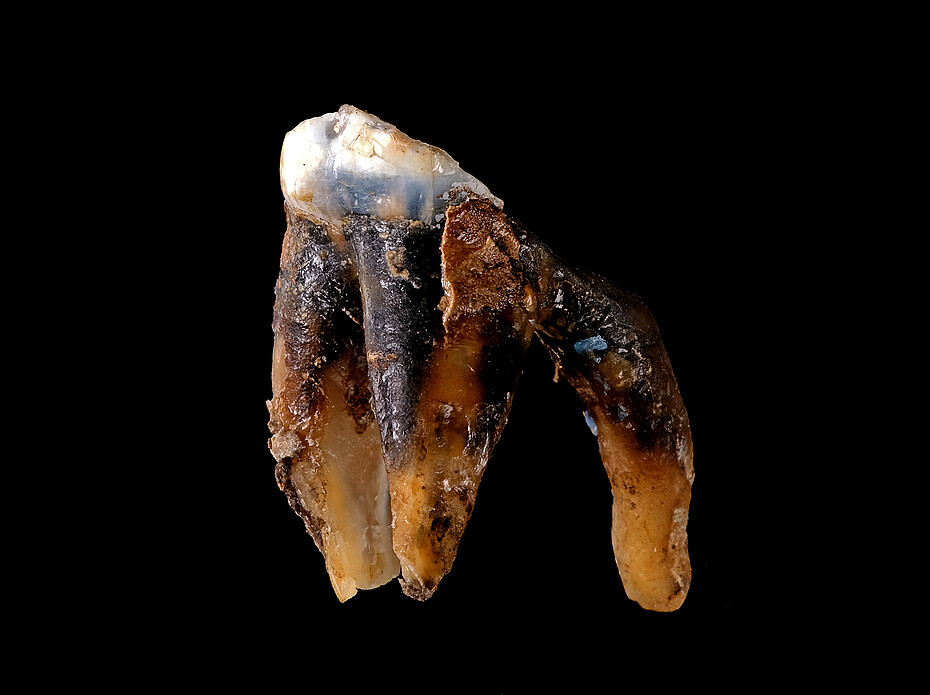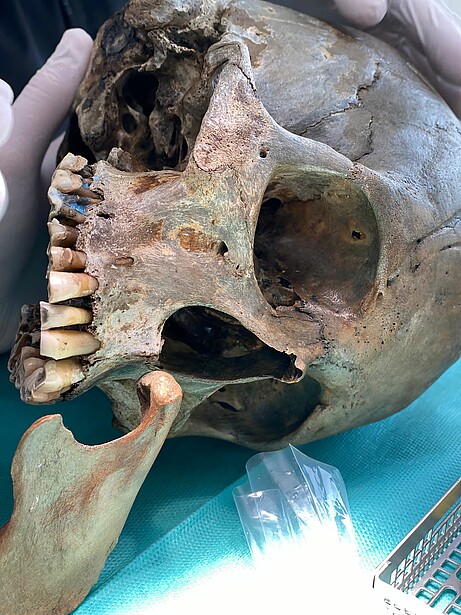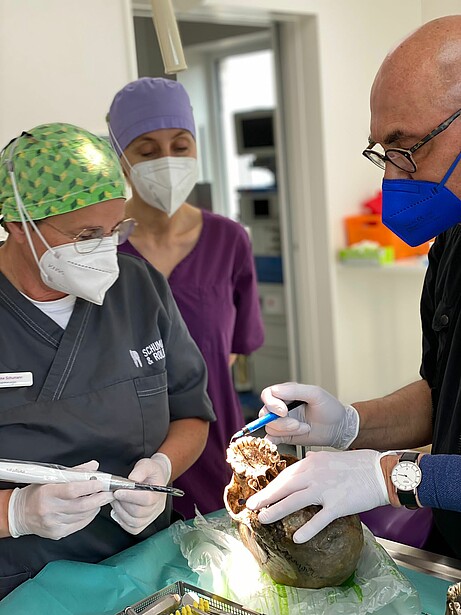
Relieved from pain after 1600 years
In a research project funded by the German Research Foundation (DFG), well-preserved graves of the cemetery near the terp Fallward (District of Cuxhaven) will be investigated systematically, applying a bundle of scientific methods. The anthropological investigations carried out by Dr. S. Grefen-Peters and the paleogenetic analyzes by Prof. Dr. B. Krause-Kyora have already led to remarkable results, which provide detailed insights into the living environment of the individuals buried in the graves.
The cranium, including the upper and lower jaw, of the approximately 50-year-old man, who was laid down in the so-called large boat grave, was completely preserved. The clearly recognizable massive abrasion of the molars and premolars, partly with exposed pulp, suggests a diet of mainly cereal-based foods.
In order to enable isotope analyzes in addition to further paleogenetic investigations, a tooth extraction was recently carried out. The procedure was executed in the dental surgeries of Dr. J. Huntemann and Dr. W. Schumann. Using a digital volume tomography (DVT) created in advance, a three-dimensional representation of the cranium was recorded. The tooth intended for extraction still showed clear traces of what was probably an extremely painful apical granuloma in the root area. Since the further scientific analyses cannot be carried out non-destructively, the upper jaw was first professionally casted. This dental cast is now the basis for a detailed replica of the extracted tooth by a dental laboratory specializing in the reconstruction of teeth. This dental cast is now used in dental technology a conservation laboratory as the basis for a lifelike reconstruction of the removed molar.


